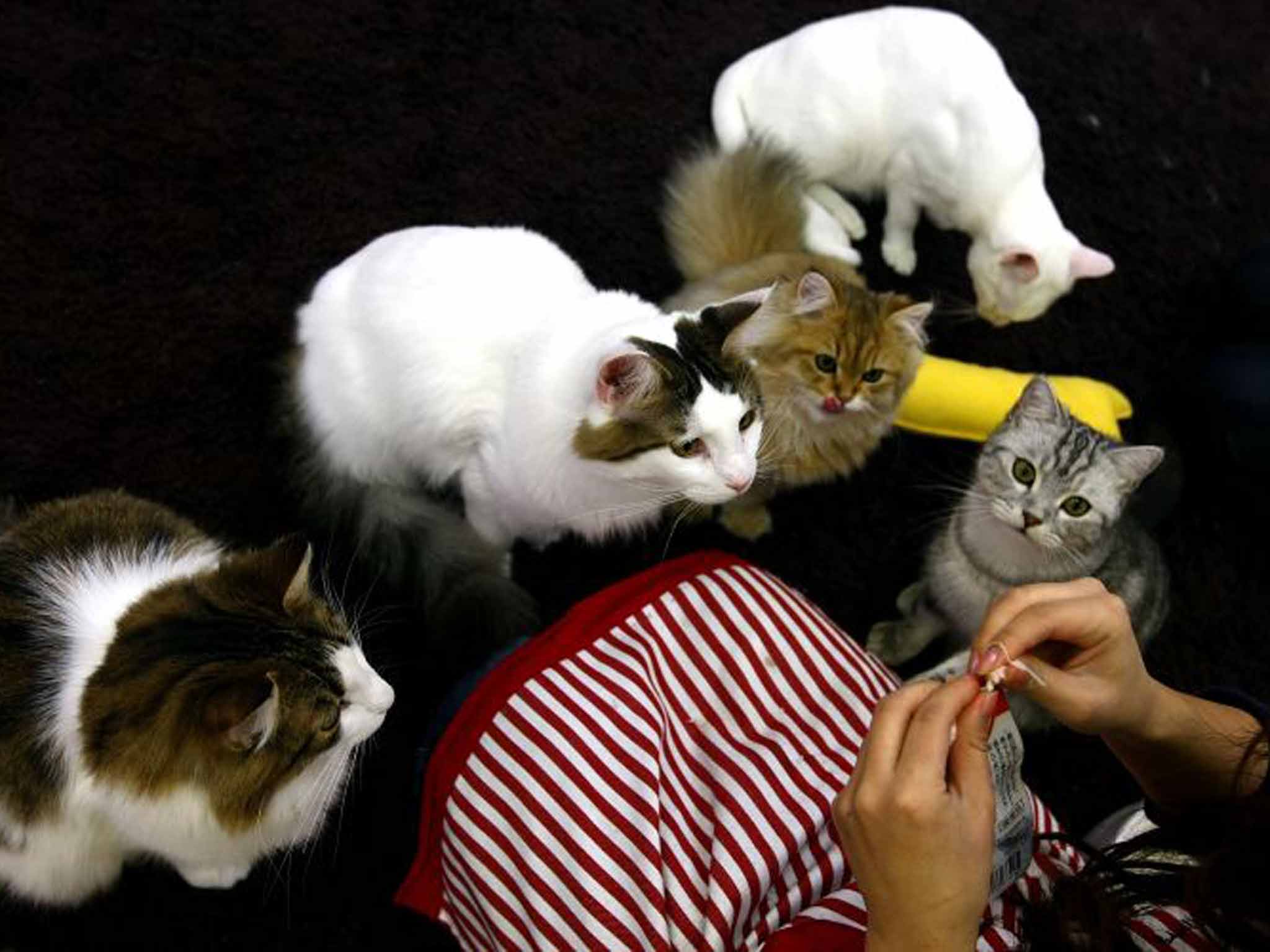The different meows and movements your mysterious cat uses to communicate with you
'Blinking is like a kitty kiss,' cat expert Dr Gary Weitzman recently said

Cats, being famously aloof creatures, can often be hard to read. A closer look at their mannerisms and movements will show that they actually give off more signals than we realise.
We all know that if a cat puffs up its tail to feather boa proportions, then it’s best to steer clear as it is scared or angry and could be ready to lunge and attack at any moment.
A hiss is often reserved for rival kitties in the neighbourhood, or even home, who dare to encroach on territory. Or even pesky dogs who just don’t know when to back off.
Cats – now having been domesticated for more than 5,300 years – have developed the ability to communicate with mankind with a variety of sounds and signals.
Aoshima: Cats Island
Show all 13Some historians even believe that cats became close to humans around 10,000 years ago, first in Cyprus and then Egypt where felines fended off hungry mice from crops and grains.
Since their adaptation to the human world, our furry whiskered friends have developed around 16 different meows. They do not tend to meow at other cats or animals but they have perfected their pitches to get exactly what they want out of us humans.
The meows each have their own use to make demands, announcements and objections. However, yowls often mean pain or that an un-neutered or un-spayed cat is in mating mode.
Chattering or twittering sounds are made when a cat sits and watches birds and squirrels outside. It is often thought that they do this to ‘attract’ small animals. Some experts think that this is an exaggeration of jaw movements a cat does to kill prey.
They reserve their special meows – or requests – for us, because of our unique opposable thumbs, obviously. Our ability to open tins of food, doors and windows for their needs and leisure is followed closely by their want of companionship and attention.
Although cats are fiercely independent – and aren’t afraid to squirm around and swipe the air to show discontent with being held – they do not like being completely alone. They crave friendship. And satisfying chin scratches.
A slow blink from a feline is like a wink between friends, according to Dr Gary Weitzman, president and CEO of the San Diego Humane Society and SPCA and author of the new National Geographic book How to Speak Cat.
“Blinking is like a kitty kiss,” he recently told Sue Manning from the Associated Press.
Even ear and whisker movements signify important messages. If a cat’s ears look like they are pinned back, don’t get close because it’s on the defensive, Weitzman said. This is especially true if its tail looks bigger.
A kitty is happy, calm or friendly when its whiskers are naturally out to the side. And extended tails are like human handshakes, he added.
A cat that has its tail straight up is happy to see you. A tail wildly thrashing about means the moggy is over-excited or agitated.
Purrs usually mean a cat is relaxed and content, which can often be heard when one is being stroked and scratched behind the ears. But purring can also mean that a cat is trying to comfort itself while feeling ill or anxious.
Ears pointed back or sideways and a low tail usually indicate anxiety. The cat could be looking for somewhere to hide and may turn its face to the wall to shut out the world.
When a cat rubs its chin and body against a person or object, it is primarily marking territory. But don’t rule it out as not being a declaration of love as possessiveness can equate to affection.
Some cats will knead their paws – and sometimes claws – on a soft surface or person’s body. This is a behavioural trait from its younger months, when a nursing kitten massaged its mother to make milk flow.
A cat does this when its really happy and will often cling on for as long as possible, despite their humans howling in pain.
Subscribe to Independent Premium to bookmark this article
Want to bookmark your favourite articles and stories to read or reference later? Start your Independent Premium subscription today.

Join our commenting forum
Join thought-provoking conversations, follow other Independent readers and see their replies